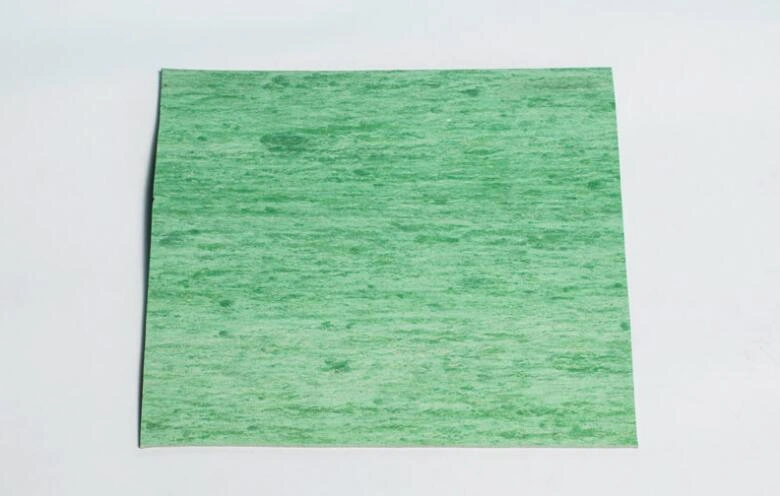What is the difference between asbestos sealing materials and Non-Asbestos sealing materials?We may summarize it:
Asbestos sealing materials are more resistant to high temperature than Non-Asbestos sealing materials. The main components of asbestos sealing materials are asbestos, fillers and rubber. Among them, the temperature resistance of asbestos and fillers is very high.
The main components of most Non-Asbestos sealing materials are mineral fibers, organic fibers, fillers and rubber. Among them, the temperature resistance of organic fibers is generally At around 200℃, the highest temperature resistance of asbestos gaskets has reached about 1000℃.
1.Asbestos sealing material has higher mechanical strength than Non-Asbestos sealing material.
(1) The surface of the asbestos fiber is attached with multivalent metal cations, which easily forms a strong interface with the negatively charged rubber on the surface, which improves the bonding strength of the rubber fiber, that is, the mechanical strength of the asbestos sealing material. The Non-Asbestos mineral fibers currently used are not as good as asbestos in direct affinity with the rubber matrix, so the bonding strength of rubber fibers is not as good as asbestos.
(2) Asbestos fibers can be subdivided almost indefinitely, and the specific surface area is larger than that of Non-Asbestos mineral fibers, so the reinforcement effect is obvious.
(3) The tensile strength of asbestos fiber is higher than that of Non-Asbestos fiber, so the reinforcing effect of asbestos fiber is obvious.
2.The Non-Asbestos sealing material is more compact than the asbestos sealing material.
Because the Asbestos-free sealing material has high filler content and different particle sizes, it can fully fill the micro gaps of the rubber fiber. For example, Bode Seal uses a high-precision material selection screen, and the precise screening of multiple raw materials is more uniform. In addition, the Non-Asbestos fiber does not have a tubular structure like the asbestos fiber, but a solid structure, so the compactness is better.

3.A Shift Towards Non-Asbestos Alternatives for Health and Safety
As we all know, the seriousness of asbestos materials on human health has long been banned from the use of asbestos materials in developed countries such as Europe, America and Japan, and my country will gradually phase out asbestos sealing materials and replace them with Non-Asbestos sealing materials.
Asbestos-free sealing materials are environmentally friendly, and asbestos sealing materials are non-environmental friendly. Asbestos fibers contained in asbestos sealing materials are prone to silicosis in humans, and Asbestos-free sealing materials do not contain asbestos fibers.
Contact us today at gasket@weitengroup.com or visit our website www.weitengroup.com to explore our range of gasket Sheet.
Continuous Monitoring for Long-Term Performance
In addition to the precautions mentioned above, monitoring the gasket's performance over time is crucial. Regular inspections can help identify issues or damage before they escalate into leaks or other problems. Signs of damage include distortion, cracks, or excessive compression or relaxation. Identifying and addressing issues promptly ensures sustained performance and reliability.
3. Additional Considerations
Temperature and Pressure: Consider the specific temperature and pressure requirements of the application. Select a gasket that can withstand the conditions it will be exposed to, avoiding compromises in sealing performance due to thermal expansion or contraction.
Chemical Compatibility: Evaluate the chemical compatibility of the filler material with the fluids or gases in the system. Choosing a gasket with a compatible filler material prevents damage to the gasket and ensures a reliable seal.
Bolting Sequence: Follow the correct bolting sequence during installation to ensure even and uniform compression of the gasket. Uneven compression can lead to premature gasket failure or leaks.
Handling and Storage: Handle and store Spiral wound gaskets with care to prevent damage or distortion. Storing gaskets in their original packaging and avoiding stacking heavy items on top of them helps maintain their integrity.
Regular Inspections: Perform regular inspections to identify signs of damage or wear on the gasket. Promptly address any issues to uphold performance and reliability.
By incorporating these considerations and best practices, industrial operations can ensure that their Spiral wound gaskets deliver optimal performance and maintain a dependable seal.
Contact us today at gasket@weitengroup.com or visit our website www.weitengroup.com to explore our range of gasket.